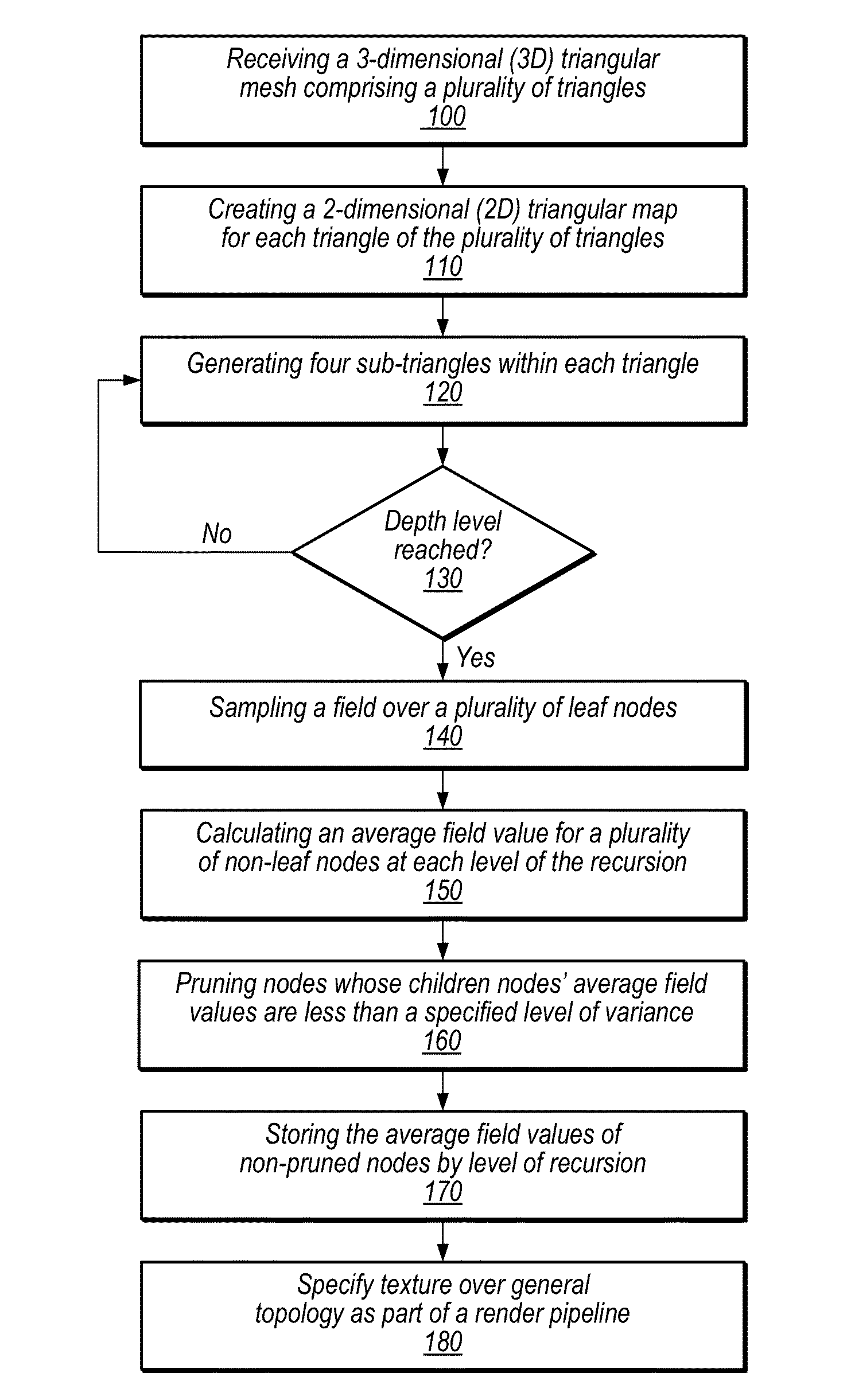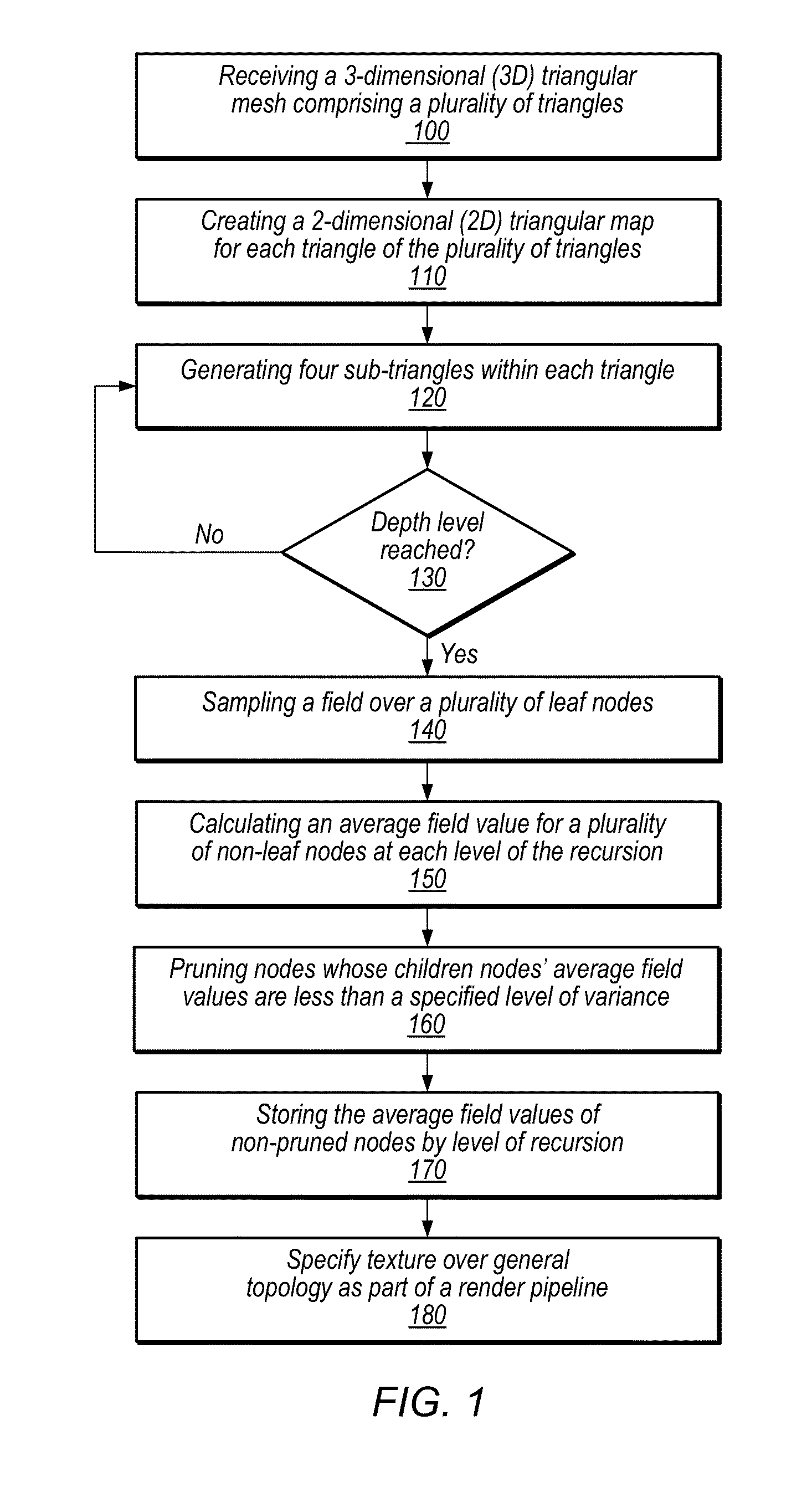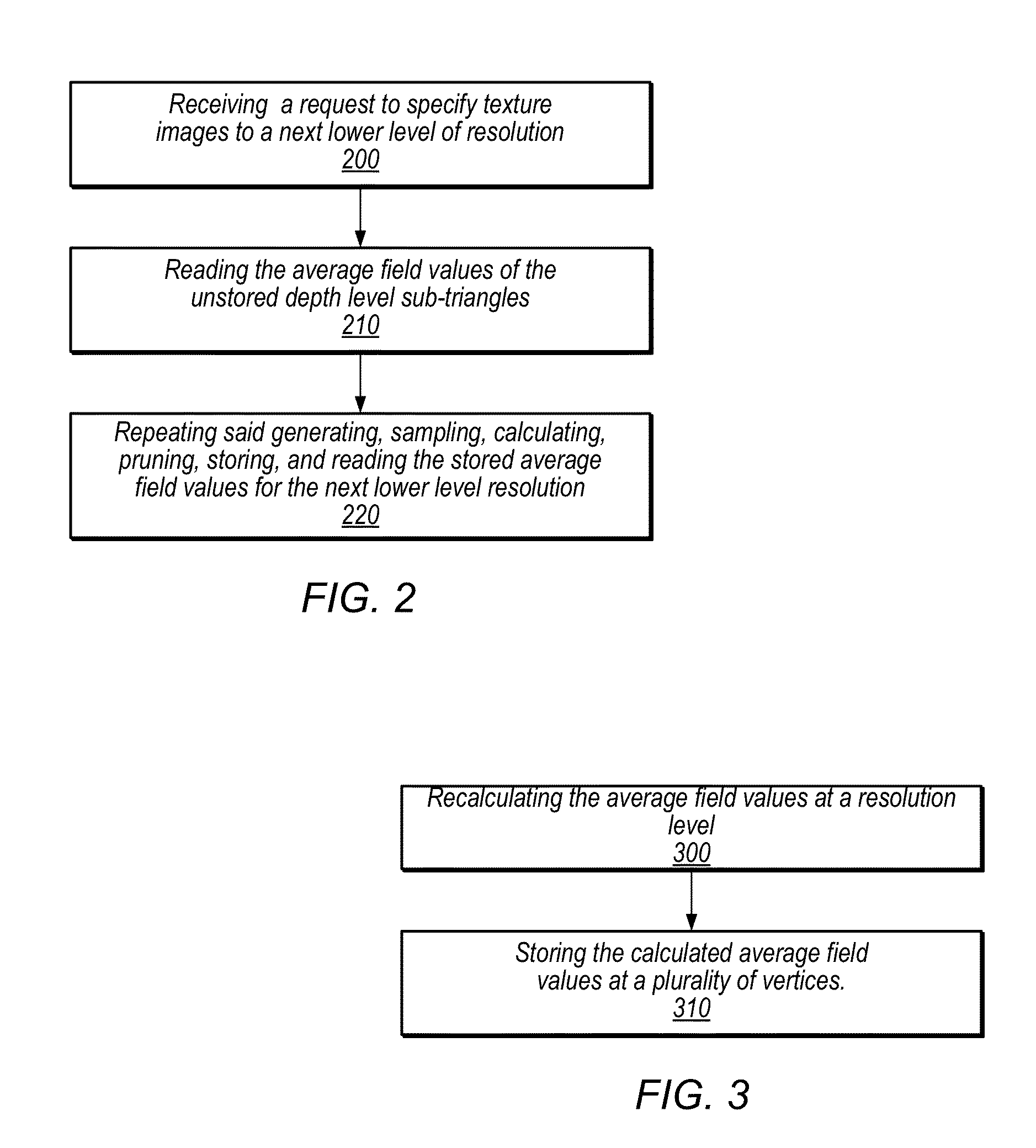Representing a Field Over a Triangular Mesh
a triangular mesh and field technology, applied in the field of graphic rendering, can solve the problems of reducing sampling accuracy and storage efficiency, large and complex datasets, and requiring considerable time and computing resources to create pre-computed textures (data fields), and achieve the effect of facilitating the representation of fields
- Summary
- Abstract
- Description
- Claims
- Application Information
AI Technical Summary
Benefits of technology
Problems solved by technology
Method used
Image
Examples
example implementations
[0060]FIG. 4 illustrates a field representing module that may implement one or more of the field representing techniques and tools illustrated in FIGS. 1 through 3. Field representing module 420 may, for example, implement one or more of a TriTree module 424, TriFlat module 426, and interpolation module 428. FIG. 5 illustrates an example computer system on which embodiments of field representing module 420 may be implemented. Field representing module 420 may receive as input a triangular mesh 410. Field representing module 420 may receive user input 412 via user interface 422. For example, a user may specify a particular order and structure in which to serialize the TriTree structure via user interface 422. Or, a user may specify a particular view or resolution layer of a rendering engine. Field representing module 420 may create a TriTree structure, for example, a TriFull and / or TriFlat structure. Field representing module 420 may also interpolate the TriTree structure to a 3D mod...
PUM
 Login to View More
Login to View More Abstract
Description
Claims
Application Information
 Login to View More
Login to View More - R&D
- Intellectual Property
- Life Sciences
- Materials
- Tech Scout
- Unparalleled Data Quality
- Higher Quality Content
- 60% Fewer Hallucinations
Browse by: Latest US Patents, China's latest patents, Technical Efficacy Thesaurus, Application Domain, Technology Topic, Popular Technical Reports.
© 2025 PatSnap. All rights reserved.Legal|Privacy policy|Modern Slavery Act Transparency Statement|Sitemap|About US| Contact US: help@patsnap.com



